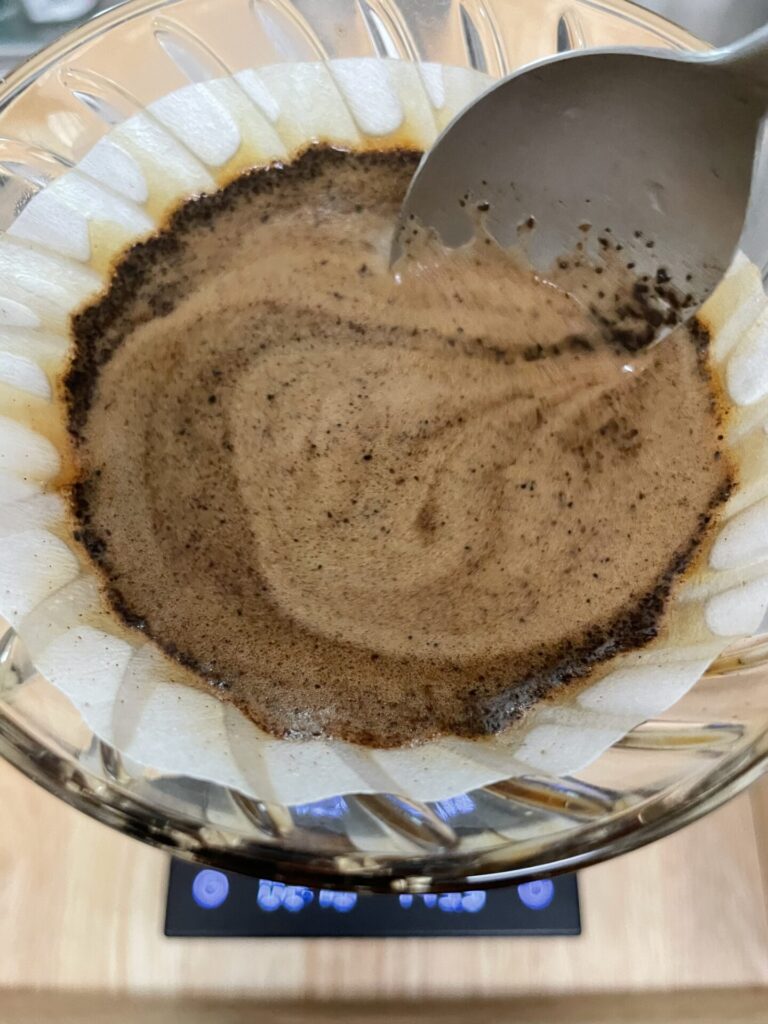Hi everyone!
In this fifth post of the coffee extraction parameter series, we will look in to agitation. Please check this series summary page as well.
Agitation, which in simpler terms is mixing your coffee grounds and water, is an important factor in getting an even extraction.
Parameter Basics
The mixture of coffee grounds and water is sometimes call the slurry. When you agitate the slurry you can assist the extraction. As you can imagine, when you mix the slurry more of the grounds contact the water getting you more extraction.
Agitation is also key in getting an even extraction from your coffee. If you don’t mix the slurry, you may have some grounds which are over-extracted causing some harshness, and others which are under-extracted leaving some valuable coffee flavor in the grounds.
You can simply take a spoon and mix the slurry around for brewers such as pour-over drippers and french presses. When you pour water on some coffee grounds, you usually get some grounds that float on top, forming what’s called a crust. When the hot water contacts that grounds, CO2 gas which was trapped in the grounds get released. This gas clings on to the grounds to make them float. When you have a crust, the grounds at the surface are not contacting the water. By mixing and letting this crust fall, you can extract more out of your coffee.


Agitation is also good at the blooming stage. The blooming stage is when you first pour hot water on to your grounds and let them sit a little bit. The aim of this is to let the grounds de-gas before starting the extraction phase. By giving the slurry in this stage, you can get the grounds evenly saturated with water.
What about brewers which can’t be agitated?
There are some brewers and methods which do not allow for agitation. For example espresso machines and mocha pot do not let you touch the grounds while extracting. And with “dome style” pour-overs which is a popular method in Japan, the whole point is to not agitate the grounds to keep this dome up.
Even in these cases, getting an even extraction is an important factor. You may have run into the so called espresso puck preparation. They use fancy distribution tools to even out the grounds, then tamp the puck as flat as possible. This uniformly distributes the grounds and prevents channels forming in the puck.
Links to other post in the series
The other parameters are discussed in these other posts.




コメント